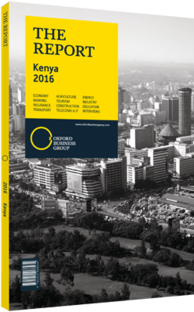Kenya's cement sector increasingly competitive with new players
Bolstered by a spate of planned infrastructure projects and strong construction industry expansion, Kenya’s cement sector is expected to record a positive performance in 2015, with excess supply gradually being absorbed by rising domestic and regional consumption. The sector faces a number of challenges, however, and an influx of new players entering the market will increase competition and put further pressure on already slim margins.
A Mature Industry
Kenya’s mature and well-established cement industry is home to six manufacturers, the largest of which are Bamburi Cement, a subsidiary of the Lafarge Group, with an annual installed capacity of 2.1m tonnes at plants in Nairobi and Mombasa; National Cement, a subsidiary of Devki Group, with 2m tonnes; the East Africa Portland Cement Company with 1.3m tonnes; Mombasa Cement and Savannah Cement, each with 1.5m tonnes of annual capacity; and ARM Cement, formerly Athi River Mining, with 1m tonnes of installed capacity.
Cement production and consumption have both been on the rise in recent years, although the latter continues to outpace the former, with the Kenya National Bureau of Statistics (KNBS) reporting in its “2015 Economic Survey” that total cement production rose by 16.3% in 2014 to reach 5.88m tonnes, compared to a 7.8% increase recorded in 2013. Although consumption stood at 5.2m tonnes in 2014, it has been increasing faster than production, with the KNBS reporting a 21.8% rise in consumption in 2014, driven by robust growth in the construction industry. In February 2015 Standard Investment Bank forecast that Kenya will remain the dominant country for cement activity in the EAC through to 2017, accounting for 42% of total consumption and 51% of total production.
Construction Growth
A number of cement manufacturers have moved into the Kenyan market in recent years, attracted by a spate of planned infrastructure builds including the Standard Gauge Railway project, which will require up to 650,000 tonnes of cement during its four-year construction phase, and the Lamu Port-South Sudan-Ethiopia Transport Corridor Project, which also involves the construction of new highways, tourism facilities, and an oil refinery and pipeline connecting the Lamu Port to South Sudan, Ethiopia and Uganda at an estimated cost of $25bn.
The most notable new market entrant is Nigerian giant Dangote Cement, which announced plans to invest $400m to build a cement plant in Kitui in March 2015. The factory is expected to reach annual production capacity of 3m tonnes, up from the 1.5m tonnes originally planned, as a result of new limestone supply after the firm was granted a concession to mine in Kitui County. Cemtech, a subsidiary of India’s Sanghi Group, also announced plans to invest $131m in a new cement plant in February 2015.
Expansion among existing players is also ongoing; in January 2015, Savannah Cement announced plans to build a second milling facility, while Karsan Ramji & Sons, based in Kitengela, said in August 2015 that it will begin construction on a new cement plant in Nakuru, after previously unveiling plans to invest nearly $5m in a cement mini-plant in May 2014. National Cement, meanwhile, is currently in the process of building a new $200m cement plant in Kajiado.
Despite its strong growth prospects, the industry faces a number of challenges moving forward, including the depreciation of the shilling, depressed global commodities prices and falling international demand. Furthermore, the entrance of Dangote and Cemtech into the market will increase competition in the segment, with supply still expected to remain greater than demand in the near future.
You have reached the limit of premium articles you can view for free.
Choose from the options below to purchase print or digital editions of our Reports. You can also purchase a website subscription giving you unlimited access to all of our Reports online for 12 months.
If you have already purchased this Report or have a website subscription, please login to continue.

